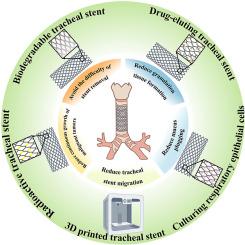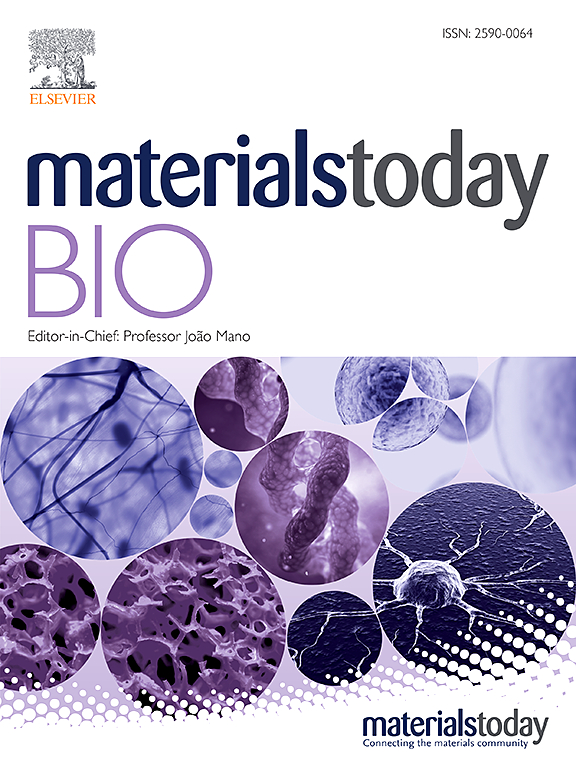针对相关并发症的气管支架设计研究取得进展
IF 8.7
1区 医学
Q1 ENGINEERING, BIOMEDICAL
引用次数: 0
摘要
气管支架可用于快速重建气道,缓解气管狭窄患者的呼吸困难症状。然而,现有的气管支架会导致肉芽组织形成、移除困难、恶性肿瘤持续生长、支架移位和粘液堵塞等并发症。在本文中,我们回顾了用于减少气管支架设计相关并发症的主要方法。药物洗脱支架可抑制肉芽组织形成,防止感染和局部化疗。可降解支架可支撑气管一段时间,维持气管通畅,并逐渐降解,避免了支架的移除或更换。装载 I125 的放射性支架在抑制恶性肿瘤的持续生长方面具有良好的潜力。三维打印技术实现了患者专用支架的制造,提高了复杂气管解剖结构与支架的匹配度,从而为解决因结构不匹配导致的支架移位问题提供了新的解决方案。尽量减少支架对粘液纤毛清除的阻碍、提供防污涂层以及在支架表面培养呼吸道上皮细胞是减少粘液堵塞的主要方法。我们还提出了气管支架未来的研究方向,以指导理想气管支架的设计和制造。本文章由计算机程序翻译,如有差异,请以英文原文为准。

Advances in studies on tracheal stent design addressing the related complications
Tracheal stents can be used to quickly reconstruct the airway and relieve symptoms of dyspnea in patients with tracheal stenosis. However, existing tracheal stents lead to complications such as granulation tissue formation, difficulty in removal, persistent growth of malignant tumors, stent migration, and mucus plugging. In this article, we reviewed the main methods used to reduce complications associated with tracheal stent design. Drug-eluting stents can inhibit granulation tissue formation and prevent infection and local chemotherapy. The biodegradable stent can support the trachea for some time, maintain tracheal patency, and degrade gradually, which avoids removing or replacing the stent. Radioactive stents loaded with I125 have good potential for inhibiting the persistent growth of malignant tumors. Three-dimensional printing technology enables the manufacturing of patient-specific stents, which increases the degree of matching between the complex tracheal anatomy and the stent, thus providing a new solution for stent migration caused by structural mismatch. Minimizing the barrier of the stent to mucociliary clearance, providing an anti-fouling coating, and culturing respiratory epithelial cells on the surface of the stent are the main methods used to reduce mucus plugging. We also proposed future research directions for tracheal stents to guide the design and manufacture of ideal tracheal stents.
求助全文
通过发布文献求助,成功后即可免费获取论文全文。
去求助
来源期刊

Materials Today Bio
Multiple-
CiteScore
8.30
自引率
4.90%
发文量
303
审稿时长
30 days
期刊介绍:
Materials Today Bio is a multidisciplinary journal that specializes in the intersection between biology and materials science, chemistry, physics, engineering, and medicine. It covers various aspects such as the design and assembly of new structures, their interaction with biological systems, functionalization, bioimaging, therapies, and diagnostics in healthcare. The journal aims to showcase the most significant advancements and discoveries in this field. As part of the Materials Today family, Materials Today Bio provides rigorous peer review, quick decision-making, and high visibility for authors. It is indexed in Scopus, PubMed Central, Emerging Sources, Citation Index (ESCI), and Directory of Open Access Journals (DOAJ).
 求助内容:
求助内容: 应助结果提醒方式:
应助结果提醒方式:


